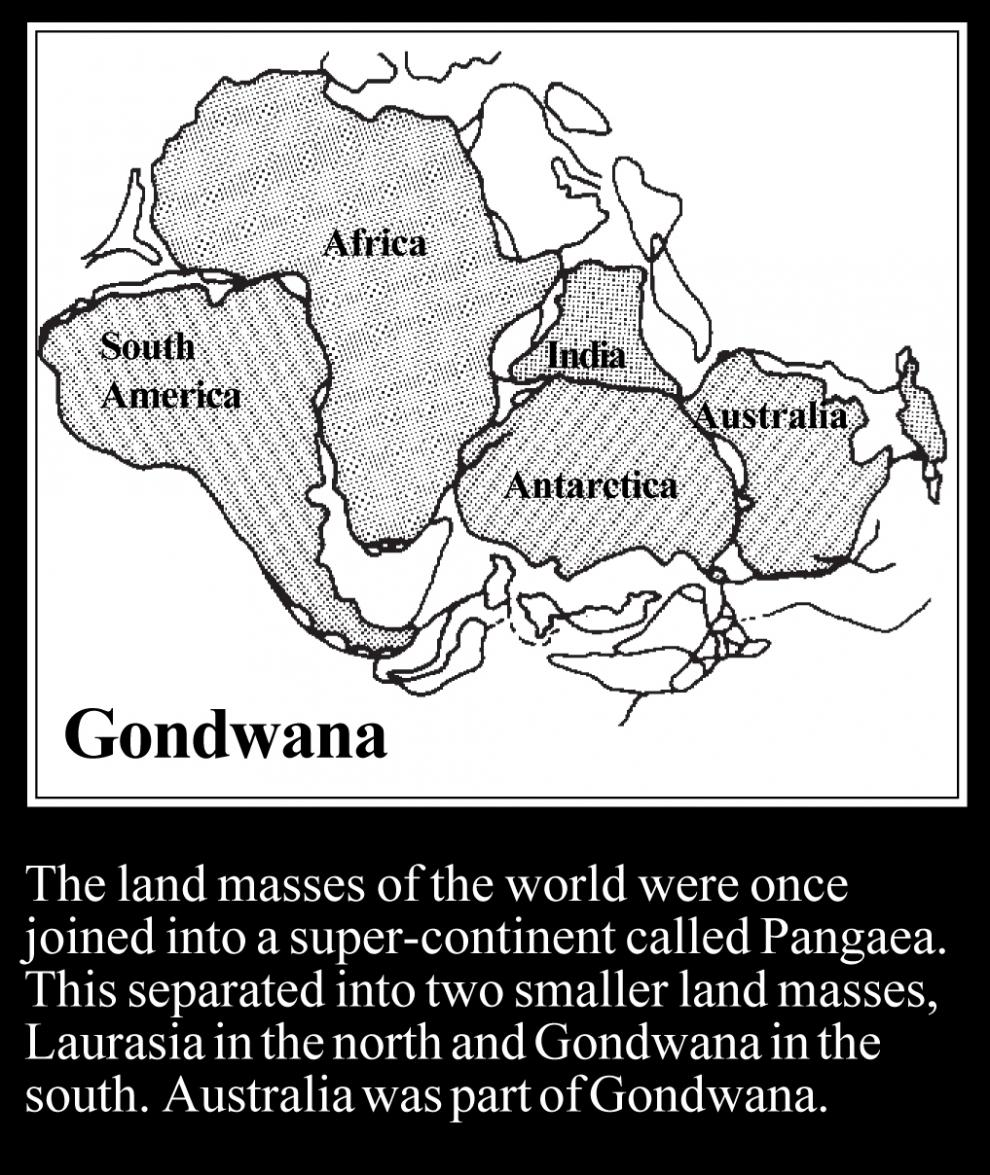Important Facts For Prelims
Colossal Snake Fossil Unearthed in Gujarat
- 23 Apr 2024
- 6 min read
Why in News?
Recently, palaeontologists (experts concerned with fossil animals and plants) in India have discovered the fossilised remains of a colossal snake that roamed the swamps of Gujarat approximately 47 million years ago.
- Researchers suggest Vasuki indicus rivalled the infamous Titanoboa, being one of the largest known predators.
What are the Key Findings About Vasuki Indicus?
- About:
- Vasuki Indicus: The newly identified species, Vasuki indicus, belongs to the now-extinct Madtsoiidae snake family.
- It is a Gondwanan terrestrial snake, that lived during the warm Middle Eocene period, spanning from the Upper Cretaceous (100.5 to 66 mya (million years ago)) to the Late Pleistocene epochs (0.126 to 0.012 mya).
- Size Estimates: The fossilised remains suggest lengths between 10.9 and 15.2 metres, surpassing even the largest modern snakes.
- This discovery sheds light on the evolution of large body sizes, possibly influenced by high temperatures in the tropical zones of that era.
- The warm Middle Eocene climate likely played a role in the evolution of large body sizes among ancient snakes.
- Vasuki indicus thrived during this period, adapting to the tropical conditions.
- Biogeography Implications: The presence of this giant Eocene snake has significant implications for madtsoiid biogeography.
- It provides insights into how organisms were geographically distributed during that time and the factors driving their evolution.
- Vasuki indicus Named After Mythical Serpent:
- The species is named after Vasuki, a serpent associated with Lord Shiva in Hindu mythology.
- This connection adds cultural significance to the discovery.
- Vasuki Indicus: The newly identified species, Vasuki indicus, belongs to the now-extinct Madtsoiidae snake family.
- Other Large Snake:
- Titanoboa (Titanoboa cerrejonensis):
- Titanoboa is an extinct snake that lived during the Paleocene Epoch (66 to 56 mya), considered to be the largest known member of the suborder Serpentes.
- From extrapolations of body size made from excavated vertebrae (individual sections of the backbone), palaeontologists have estimated that the body length of the average adult Titanoboa was roughly 13 metres and the average weight about 1.25 tons.
- Anaconda (genus Eunectes):
- Anaconda classified in the family Boidae, are large, constricting, water-loving snakes found in tropical South America, with three to five species.
- Green anacondas are among the largest snakes in the world, growing up to 9 meters long and weighing up to 250 kg.
- Titanoboa (Titanoboa cerrejonensis):
What are the Key Facts About the Madtsoiidae Family of Snakes?
- The Madtsoiidae family of snakes, now extinct, once roamed the ancient lands of Gondwana.
- Their fossil record spans from the early Cenomanian period (during the Upper Cretaceous) to the late Pleistocene.
- These fascinating serpents left their traces in various regions across the globe, including South America, Africa, India, Australia, and Southern Europe.
- Genera and Diversity:
- Vasuki: Known for its impressive length, measuring at least 11–12 meters (approximately 36–39 feet).
- Wonambi and Yurlunggur: These Australian snakes also belong to the Madtsoiidae family.
- These ancient snakes probably used a hunting strategy akin to modern boas and pythons by constricting their prey.
- Evolutionary Significance:
- Madtsoiids persisted in Australia until the Pleistocene, but their existence elsewhere declined during the Eocene epoch.
- While some species survived in South America and India through the Oligocene, their overall presence waned.
UPSC Civil Services Examination, Previous Year Questions (PYQs)
Prelims
Q 1. Consider the following statements: (2019)
- Some species of turtles are herbivores.
- Some species of fish are herbivores.
- Some species of marine mammals are herbivores.
- Some species of snakes are viviparous.
Which of the statements given above are correct?
(a) 1 and 3 only
(b) 2, 3, and 4 only
(c) 2 and 4 only
(d) 1, 2, 3 and 4
Ans: (d)
Q 2. King Cobra is the only snake that makes its own nest. Why does it make its nest? (2010)
(a) It is a snake-eater and the nest helps attract other snakes
(b) It is a viviparous snake and needs a nest to give birth to its offspring
(c) It is an oviparous snake and lays its eggs in the nest and guards the nest until they are hatched
(d) It is a large, cold-blooded animal and needs a nest to hibernate in the cold season
Ans: (c)
Q 3. For which one of the following snakes is the diet mainly composed of other snakes? (2008)
(a) Krait
(b) Russell’s viper
(c) Rattlesnake
(d) King Cobra
Ans: (d)







